Dry rot
Our fully qualified surveyors are dry rot specialists. They are able to identify the nature, type, extent, cause and source of moisture, while recommending the solution, with a full specification and the cost of the repair.
Mycelium
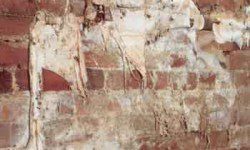
Fruiting bodies
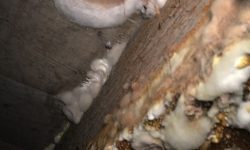
Spore dust
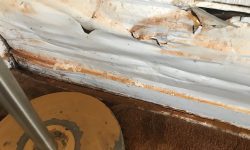
What is dry rot?
Dry rot is a term used to describe a very specific and unique type of wood rot (Serpula Lacrymans). However, despite its common name, it will generally only attack damp timber.
It is the most serious form of timber decay. It is a brown rot that typically occurs on wood embedded in, or in contact with, wet masonry. It is sensitive to heat and light and, therefore, is rarely found on exposed external timbers. It has the ability to transport moisture from damp areas to dry timbers, thus promoting the spread of the outbreak, especially in unventilated areas.
Typically, the timber has deep cracks, both along and across the grain. There is also a distinctive, mushroom smell when dry rot is prevalent.
It is a serious problem across properties in the UK. For an infection to be initiated, there needs to be a spore (or some growth that is already present), oxygen, a suitable temperature, a susceptible food source and water, all of which are to be found in buildings.
How to identify dry rot?
Dry rot is often confused with wet rot, however, there are differences between the two. The biggest difference is the amount of moisture that is needed for both wood rot to germinate.
The characteristics depends on its stage of development. The first evidence of the existence of an outbreak is often the sudden appearance of a fruiting body (sporophore) or the shrinking/distortion of timbers.
This latter feature can be quite dramatic and sudden; the change from dimensional stability to the instability of the wood visually taking place relatively suddenly.
It flourishes in damp inadequately ventilated conditions, so it will most often be found in enclosed hard-to-reach areas such as under floorboards, behind skirting boards and door frames/casings.
Unlike many other wood destroying fungi, it can readily grow over and through porous masonry, provided that there is a nutritional source (wood) from which it can spread; this ability allows the spread of the fungus from one area to another.
As these areas are often unseen, it is often the case that the wood has already progressed into an advanced state when detected; therefore, it is essential to identify the issue at its earliest opportunity.
- When exposed to light, the fungus appears to have a lemon, almost yellowish tinge, look to it
- Dry rot leaves deep cracks running across the grain of the wood, along with evidence of mycelium growth on the wood
- The affected wood will be brown in colour and will crumble due to a lack of structural integrity, as a result of dry rot using the wood as a food source
- Ordinarily, the damage is restricted to the wood, however, in some instances, large flat mushroom-like fruiting bodies may also be visible. These can easily grow through decorative finishes such as plaster or paintwork.
- Dry rot is the much more serious form of rot out of the two, as it can spread over a larger area, compared to wet rot.
- The difference between dry rot and wet rot is that wet rot fungus tends to grow on more porous surfaces, for example, wood with a high moisture content of around 50%. Dry rot, however, tends to grow on surfaces where there is a moisture content of around 20%
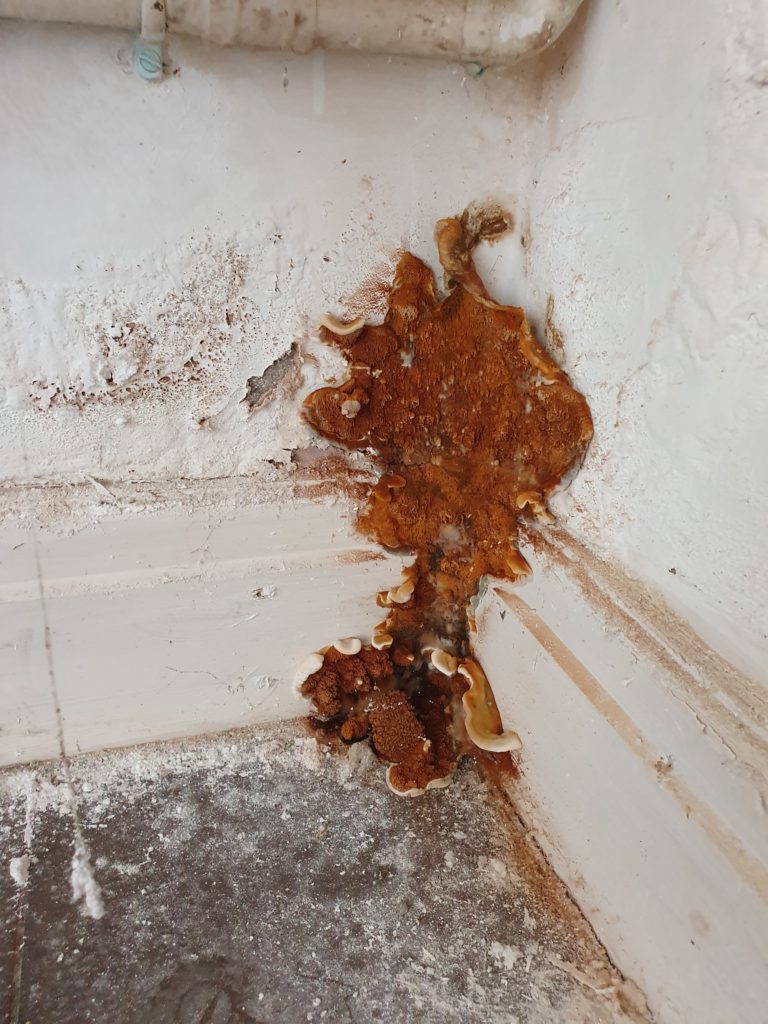
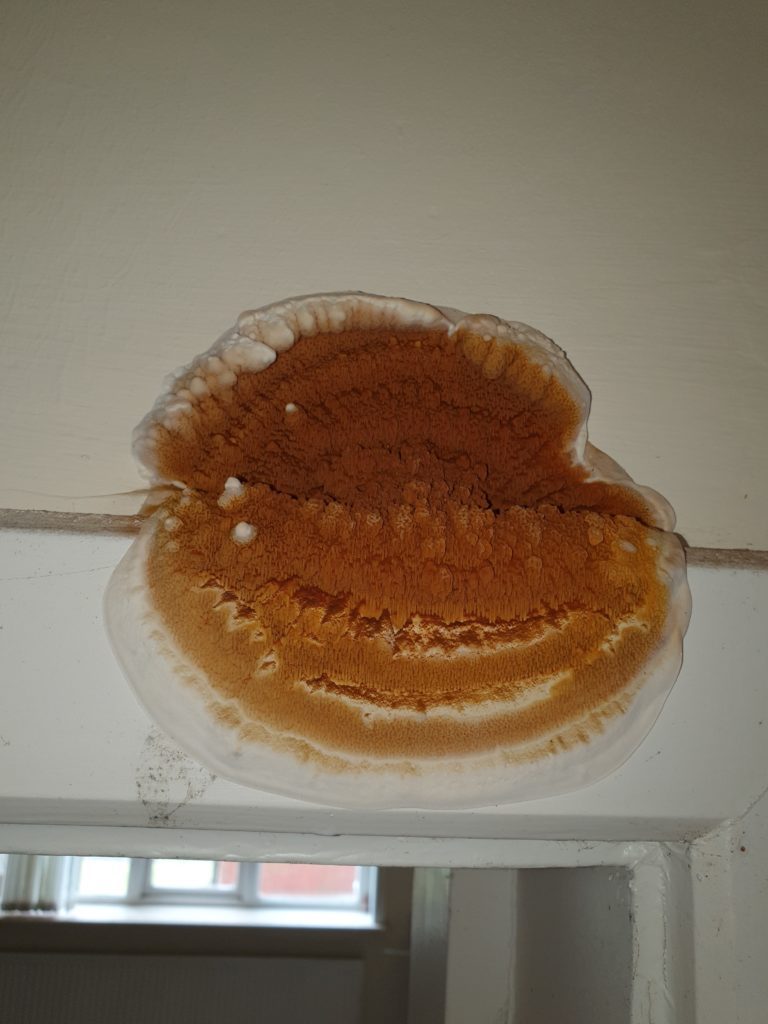
What causes dry rot?
Dry rot occurs where the timber is damp and the affecting damp has a moisture content that is in excess of 20%. There are many reasons why the timber in your property can become damp (such as penetrating damp).
The other vital ingredient to causing an outbreak is spores which are omnipresent, meaning they surround us every day, unseen by the human eye.
By themselves, these spores are harmless; however, when the spores come into contact with wet timber, they can germinate, reducing the wood to an unsound structural state.
The fine fungal thread (hypha) digests the cellulose and hemicellulose fraction of woodturning the wood brown and ultimately reducing the timber to a dry and crumbly state. Dry rot does not attack the structural lignin of the wood.
Before any treatment can be made, the damp issues must be solved first. The reason for this is that the treatments will become ineffective if the timber is damp again, resulting in a return of the problem.
Penetrating damp
Caused by external defects such as defective rainwater goods or a leaking roof.
Rising damp
Caused by a possible ineffective damp proof course, for example, where the damp proof course has been bridged.
Condensation
Lack of sufficient ventilation in a property can lead to damp.
Dry rot can affect all types of properties, regardless of their age, as long as there are certain environmental elements allowing it to survive and spread. These elements are a source of food (wood), oxygen, moisture and temperature. In optimal environmental conditions, dry rot can grow up to one metre per month.
It gets its name due to the dry and brittle state it leaves timber after exhausting away the woods nutrients. So for spores to germinate, moisture must be present within the wood above the fibre saturation point. Wood must have a high moisture content in order for infection to commence, therefore, in order to successfully eradicate dry rot, you must initially eliminate the source of moisture.
How dry rot affects your property
Dry rot can affect all kinds of timber from old or new domestic and commercial properties. This form of timber decay is an increasingly widespread concern for homeowners across the UK. If your dry rot problem isn’t treated promptly, then dry rot can become a danger to you and your home.
Sometimes, finding out that there is actually a dry rot problem is the hardest part of the treatment process. Once it has been been identified within the property, help is at hand. RTC will be able to alleviate any stress or concern you may have.
How to treat dry rot?
Dry rot is the more virulent type of wood rotting fungi. Specialist advice is imperative in order to identify the fungus and determine its true extent. From this, recommendations can be made in relation to the extent of the repairs required and the necessary specialist treatments.
To successfully eradicate dry rot, you must initially eliminate the source of moisture. The works will normally involve the replacement of decayed timbers, removal of wall plaster to expose the extent of decay and mycelial growth and the treatment of the wall structure by masonry irrigation and returning the area to a watertight condition.
For treatment, our surveyors and technicians will:
- Gain access to repair infected timber – Our trained technicians will remove any infected timber as well as any plaster that will allow us to directly access the area under attack.
- Dry rot treatment process – Dry rot treatment is used to treat the damaged timber caused by the wood rotting fungi by eradicating the sources of moisture and promoting rapid drying from the area. Controlling the moisture will enable the structure to dry out and prevent dry rot spores from germinating. Some areas of the outbreak may also need to be treated with masonry biocide and fungicide pastes, in order to prevent further attacks of wood rotting fungi and/or wood boring insects.
- Replace timbers – Having treated the timber, one of the final procedures we undertake is to remove infected material and to replace/repair and consider engineering methods to isolate structural timbers.
- Improve underfloor ventilation – One of the preventative methods that we use to get rid of dry rot is to improve the ventilation within a property. Airflow will also help to get rid of the outbreak by aiding the drying process. It may also be necessary to install a mechanical ventilation solution to remove moisture-laden air from the property. By improving airflow, we are removing one of the contributing causes.
- Prevent any possibility of an attack reoccurring – Finally, our surveyors will advise what additional steps (if any) are required to safeguard the property from further dry rot outbreaks.
Can dry rot be treated effectively?
Dry rot can be successfully treated following a detailed inspection by a professionally qualified surveyor (CSTDB – Certificated Surveyor of Timber and Dampness in Buildings).
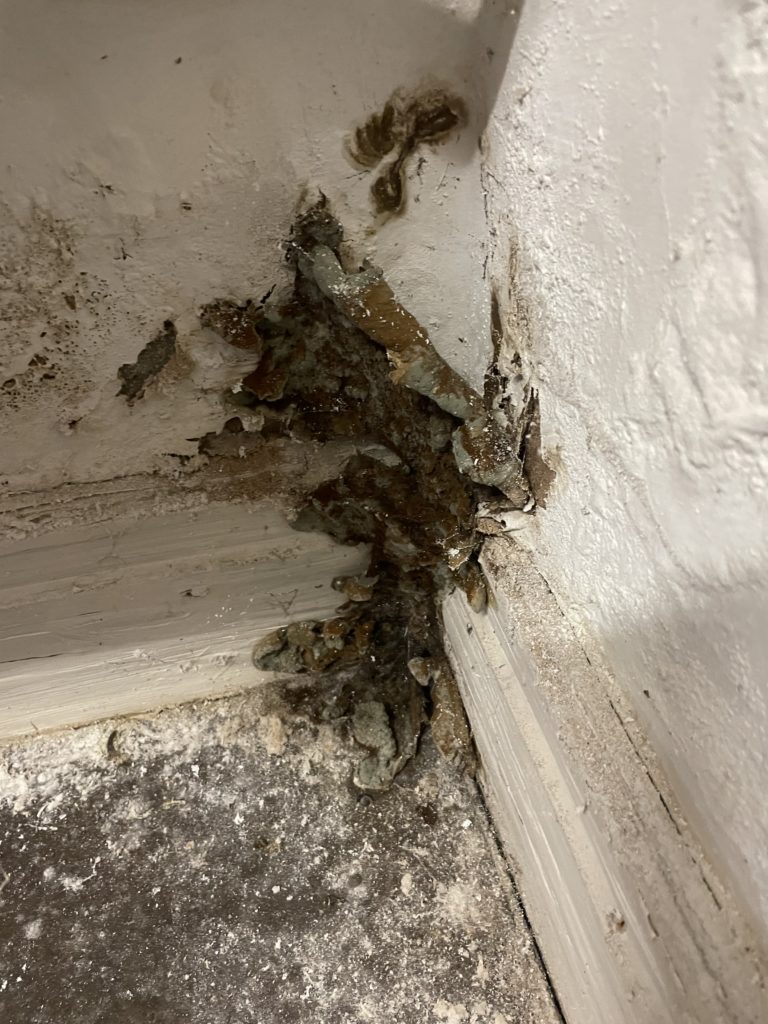
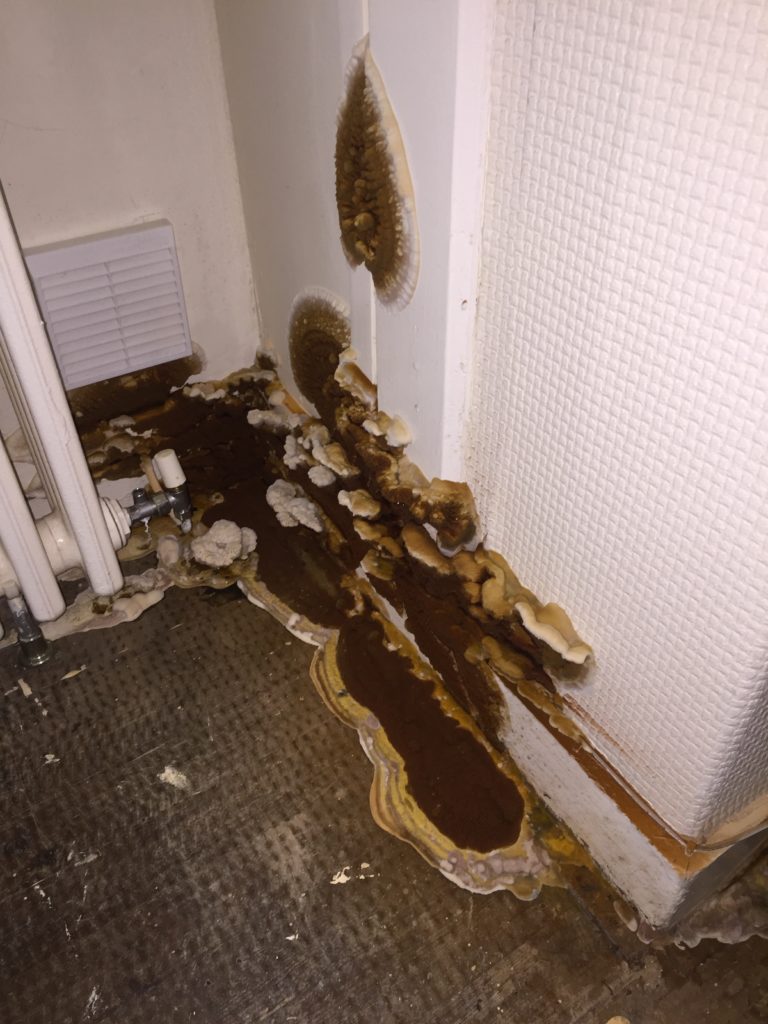
The lifecycle of dry rot
Most people don’t understand that dry rot has a life cycle and fights for its own life in extraordinary ways. It needs food to live and to grow, going to extreme lengths to make sure it continues to do so.
The four stages of a lifecycle
Spores
Spores are omnipresent, meaning they exist everywhere. Individually, they are invisible to the human eye, however, when in large numbers, they appear as orange and brown dust; this is one of the simplest ways of identification. The lifecycle of dry rot begins when spores come in contact with timber in a favourable environment. Once on the timber, the spore will germinate and produce hyphae growth.
Hyphae
Hyphae act as the root of the rot, stringing fine strands to grow through the wood and timber. The hyphae will then feed on the sugars within the timber, known as cellulose, hemi-cellulose and lignin. The fungi/fungus produces enzymes to split the sugars, reversing the formation of the wood. These enzymes, however, are unable to break down lignin. The subtraction of these sugars results in cross grain cuboidal cracking, reducing the timber to an unsound structural state. Hyphae then multiply and colonise together, generating mycelium growth, a fluffy cotton-wool like substance.
Mycelium
Mycelium can travel great distances to find new sources of food, and it is this ability to spread through various building materials that allows a dry rot outbreak to progressively feed on timbers throughout an entire property.
Sporophore
Like any life form, dry rot can be stopped by a lack of air, food, or water. But, what makes it unique, is that when short of such vital elements, it produces a self reproduction organ, known as sporophore. This allows the sport bearing surface of the sporophore to shed orange colours spores into the atmosphere in the hope that the spores can land once again in the right environment to carry on germinating and extending the growth period of the dry rot.
Does dry rot spread?
Dry rot is a living growing fungus. As such, it feeds on timbers and will actively seek out new food sources when it has to. If the humidity conditions are right, it can spread rapidly through a property on the hunt for food.
The history of dry rot
Originally known as Merulius Lacrymans, the fungal decay we now know as dry rot, can be dated back to the 18th century. However, the history of its presence in the UK still remains obscure.
Dry rot is thought to have been transported to British shores by ships from Europe carrying infected timbers; in some cases, cargoes were largely destroyed in the ships before they reached the port.
Dry rot survey
If you are having a dry rot survey carried out on your property, you need to be confident that the survey is carried out by experienced, qualified surveyors.
The timber surveyors at RTC will perform a detailed survey of the dry rot affected area before recommending any forms of dry rot treatment. At RTC, our timber surveyors have many years of experience and the relevant timber qualifications, so you can be confident in our diagnosis of your dry rot problem.
You can trust RTC when it comes to diagnosing and formulating a bespoke treatment plan to eradicate this from your property.
How is a dry rot survey carried out?
The surveyor carrying out the survey will:
- Inspect the causes of the problem; the cause of the outbreak has to be identified to resolve the situation
- Diagnose the extent of the issue affecting the property
- Inspect the property to see if there are any further timber issues, such as wet rot
- Provide detailed information in a written report detailing the correct treatments
- Provide a complete timber report detailing all the works that need to be carried out on the property to remove the dry rot problem once and for all
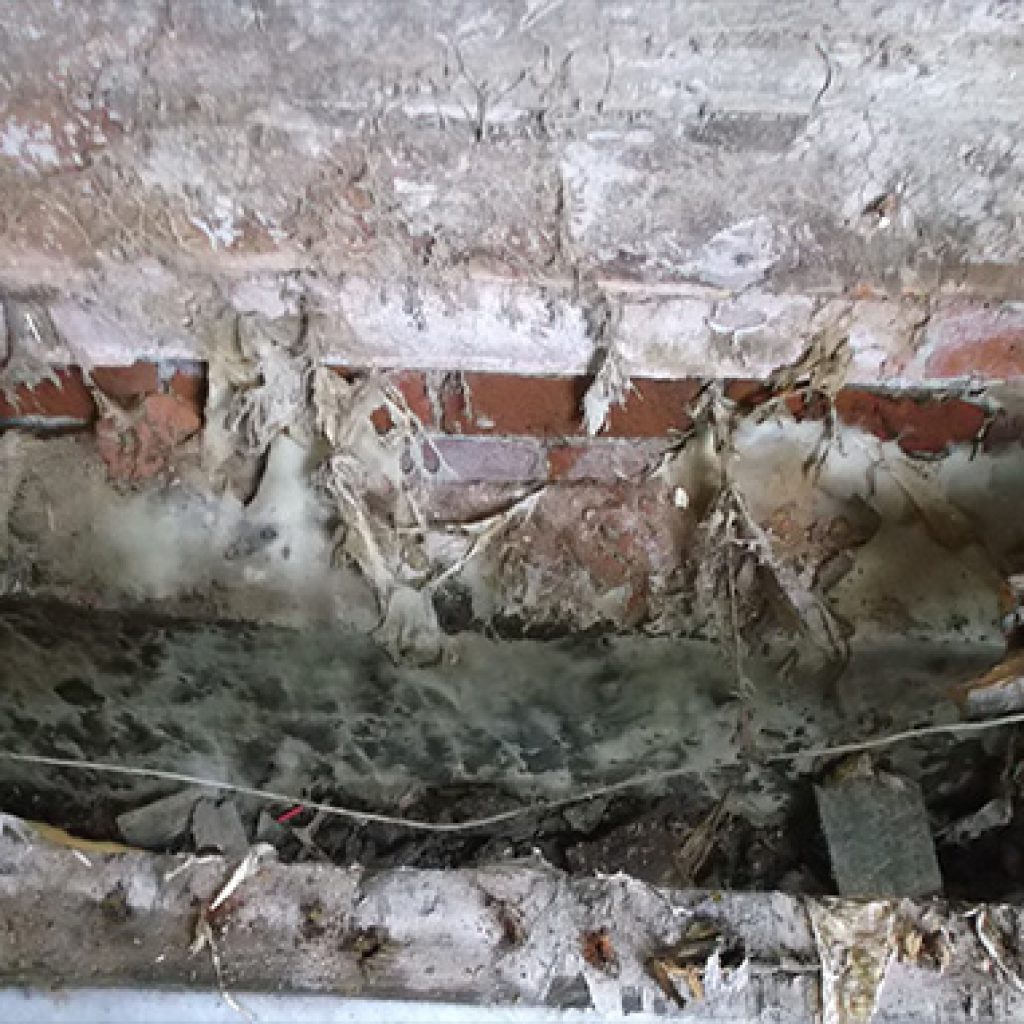
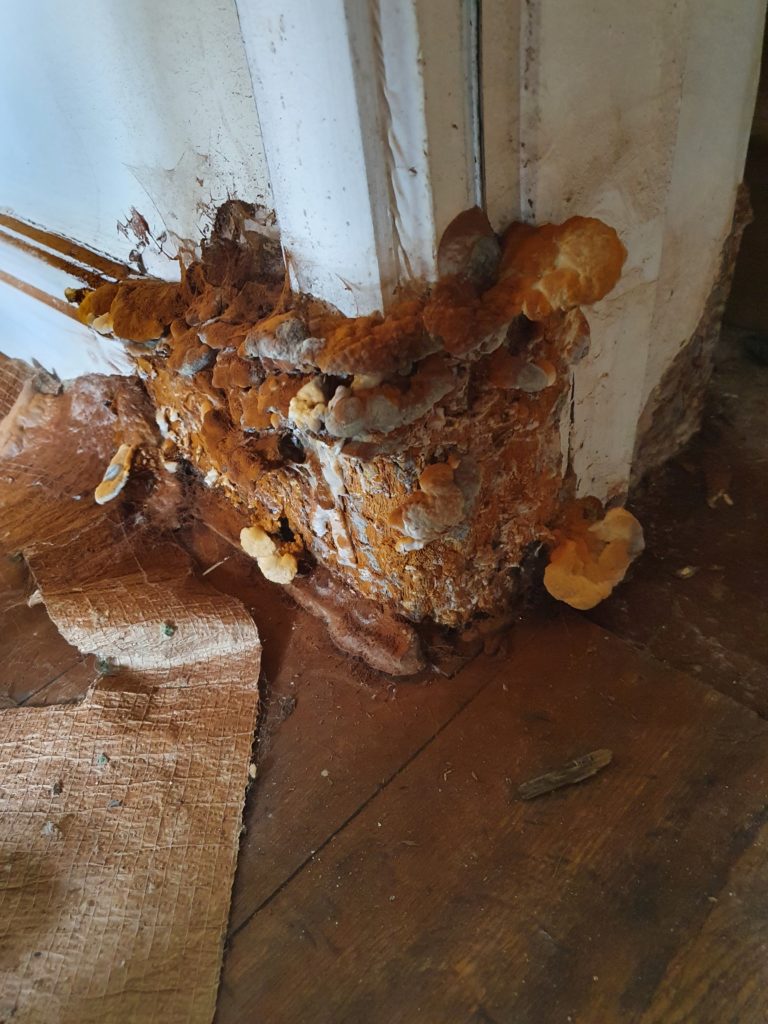
Why have a dry rot survey with RTC?
- Long-term guarantees as well as the availability of insurance backed guarantees
- Fully qualified timber surveyors who hold the recognised PCA qualification of CSRT
- Speedy response time for surveys and carrying out the work
- Which? Trusted Trader accredited
What chemicals are used to get rid of dry rot?
For treatment, we use the latest Boron products as Boron compounds are vastly superior for the control of dry rot. The purpose of the chemical surface irrigation is to provide a reliable, protective cordon around the infected area to prevent the reoccurrence of spread of the fungus.
What guarantees do RTC offer?
RTC are Property Care Association (PCA) members, therefore, are able to offer the option of a long term insured guarantee for dry rot treatment, issued by the GPI.
Because the GPI guarantee is genuine insurance, it provides protection if the contractor ceases to trade for any reason. It is also transferable to the new owners if you sell your property. See www.gptprotection.co.uk for more information.
For any queries on dry rot and wet rot solutions, or to book a survey, please contact us.
Our staff will work closely with you from survey stage, right through to the successful completion of the contract.

